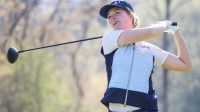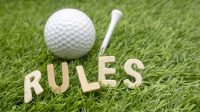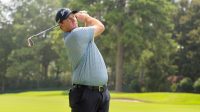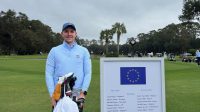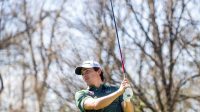Di, 13. März 2018
Die Revolution der Golfregeln ist da!
Mit Wirkung zum 1. Jänner 2019 tritt eine gründliche Überarbeitung der Golfregeln in Kraft.
Von ÖGV
Lange Zeit war ungewiss, was die Golfer 2019 tatsächlich erwarten würde. Nun haben die beiden Regelinstanzen USGA und R&A mit einer weltweiten Pressemeldung die tatsächlichen Veränderungen offiziell kundgetan. Eine deutsche Übersetzung der Übersicht zu den wichtigsten geplanten Änderungen wird erarbeitet. Untenstehend finden Sie heute bereits die englische Version.
Mehr…
| Ball at Rest |
What’s new |
| Ball Moved During Search |
No penalty for accidentally moving your ball during search. |
| No Penalty for Moving Ball on the Putting Green |
No penalty for accidentally moving your ball or ball-marker on the putting green. |
| Standard for Deciding Why a Ball Moved |
New standard to determine if you caused your ball to move. |
| Replacing Ball When Original Spot is Not Known |
When the original location of your ball is not known, replace it on its estimated spot. |
| Ball in Motion |
What’s new |
| Ball in Motion Accidentally Deflected |
No penalty if your ball in motion is accidentally deflected by you, your equipment, or your caddie. |
| Taking Relief |
What’s new |
| Measuring the Size of the Relief Area Where a Ball Must Be Dropped and Played |
Your relief area for dropping a ball will be a fixed size of either one or two club-lengths using the longest club in your bag, other than your putter. |
| New Procedure for Dropping a Ball |
Your ball must be let go from knee height and fall through the air without touching any part of your body or equipment. |
| Where a Dropped Ball Must Come to Rest |
Your ball must come to rest in the relief area where it was dropped, or else it must be redropped. |
| Fixed Distances to be Used for Measuring |
A fixed distance of the longest club in your bag, other than your putter, will be used for measuring. |
| Time For Search Before Ball is Lost |
Your ball is lost if not found in three minutes (rather than the current 5 minutes). |
| Substitution of Ball Always Allowed When Taking Relief |
You may always substitute a ball when taking relief. |
| Relief For an Embedded Ball |
Relief allowed without penalty for an embedded ball anywhere (except in sand) in the “general area” (a new term for “through the green”). |
| Procedure for Taking Lateral Relief |
In taking lateral relief, you will drop within two club-lengths of where your ball entered the penalty area. The size of a club-length will always be measured using the longest club in your bag, other than your putter |
| Procedure for Taking Back-on-a-Line Relief |
One of your options for relief from either a red or yellow penalty area will be called back-on-a-line relief. |
| Areas of the Course |
What’s new |
| When to Replace a Ball That Moves on the Putting Green |
After your ball has been lifted and replaced, you would always replace your ball on its original spot, even if it was blown by the wind or moved for no clear reason. |
| Repairing Damage on the Putting Green |
Repair of almost any damage allowed on the putting green (including spike marks and animal damage). |
| Touching Line of Play on a Putting Green |
No penalty for touching your line of play on the putting green so long as doing so does not improve the conditions for your stroke. |
| Ball Played From Green Hits Unattended Flagstick in Hole |
No penalty if your ball played from the putting green (or anywhere else) hits the unattended flagstick in the hole. |
| Areas the Committee May Mark as Penalty Areas |
Areas of desert, jungle, lava rock, etc. (in addition to areas of water) may now be marked as red or yellow “penalty areas.” |
| Touching Loose Impediments or Ground in a Penalty Area |
No penalty for moving loose impediments, touching the ground, or grounding your club in a penalty area. |
| Expanded Use of Red-Marked Penalty Areas |
Committees are given the discretion to mark any penalty area as red so that lateral relief is always allowed. |
| Elimination of Opposite Side Relief for Red Penalty Areas |
Relief from a red penalty area no longer allowed on the opposite side from where the ball last entered the penalty area. |
| Moving or Touching Loose Impediments or Touching Sand in a Bunker |
Relaxed Rules relating to loose impediments and touching the ground in a bunker. |
| Unplayable Ball in Bunker |
Relief allowed outside a bunker for an unplayable ball for two penalty strokes. |
| Equipment |
What’s new |
| Use of Clubs Damaged During Round |
A club damaged during a round can continue to be used, even if you damaged it in anger. |
| Adding Clubs to Replace a Club Damaged During Round |
You will not be allowed to replace a damaged club during a round if you were responsible for the damage. |
| Use of Distance-Measuring Devices |
The use of DMDs will be allowed unless a Local Rule has been adopted prohibiting their use. |
| Playing a Ball |
What’s new |
| Caddie Standing Behind a Player to Help Line the Player Up |
A caddie is not allowed to stand on a line behind you while you are taking your stance and until your stroke is made. |
| Caddie Lifting Ball on the Putting Green |
Your caddie may lift and replace your ball on the putting green without your specific authorization to do so. |
| Ball Accidentally Struck More Than Once During a Stroke |
If your club accidentally strikes your ball more than once during a stroke, there will be no penalty and your ball will be played as it lies. |
| When to Play During a Round |
What’s new |
| Encouraging Prompt Pace of Play |
It is recommended that you play “ready golf” and make each stroke in no more than 40 seconds. |
| Maximum Score Form of Stroke Play |
A new “Maximum Score” form of stroke play is recognized, where your score for a hole is capped at a max score. |
| Player Behavior |
What’s new |
| Expected Standards of Player Conduct |
The proposed new Rules speak to the high standards of conduct expected from players. |
| Code of Player Conduct |
Committees are given authority to adopt their own code of player conduct and to set penalties for breaches of that code. |
| Elimination of the Requirement to Announce the Player’s Intent to Lift a Ball |
When you have good reason to mark and lift your ball, you are no longer required to first announce your intention. |
| Reasonable Judgment in Estimating and Measuring |
A player’s reasonable judgment will not be second-guessed based on later evidence. |

 Bild: FischerPhoto
Bild: FischerPhoto
